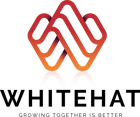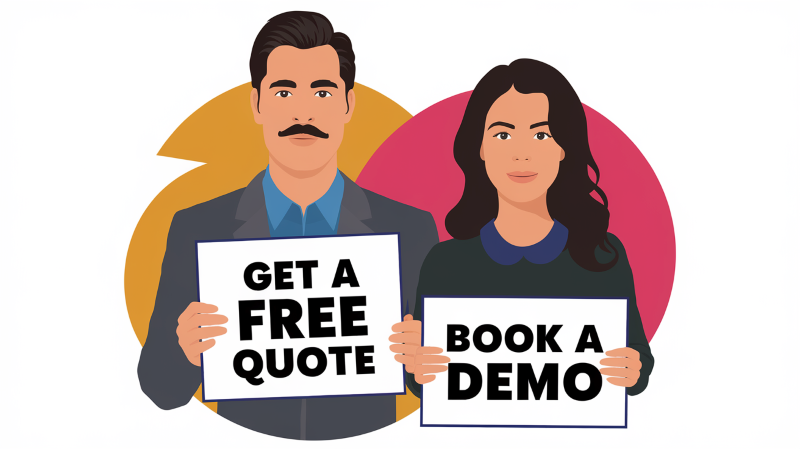HUBSPOT AND BREEZE AI

HubSpot, a leading CRM platform, offers a range of tools and features to support inbound marketing. Its new AI, called Breeze, further enhances the convert stage with the following capabilities:
- Data Enrichment: Breeze Intelligence automatically enriches contact records with
- valuable data, such as company size, industry, and revenue. This helps personalise outreach and improve lead qualification14.
- Buyer Intent: Breeze Intelligence tracks buyer intent by analysing website activity and identifying prospects who are actively researching solutions. This allows marketers to prioritise high-intent leads and improve sales efficiency and close rates14.
- Form Shortening: Breeze Intelligence automatically shortens forms for returning visitors by pre-filling information it already knows. This reduces friction and improves conversion rates14.
- Content Agent: Breeze's Content Agent can generate different types of content, including blog posts, social media updates, and email copy. This helps marketers create engaging content quickly and efficiently15.
CONTENT IN THE CONVERT STAGE
The type of content you use in the convert stage plays a crucial role in attracting and converting leads. Here are some effective content formats:
Content Format |
Description |
Benefits |
Example |
|---|---|---|---|
|
Blog posts |
Informative articles that address specific topics or questions |
Educate and engage prospects, establish thought leadership |
A blog post explaining the benefits of a specific product feature |
|
Case studies |
Real-world examples of how your product or service has helped customers |
Build trust and credibility, demonstrate value |
A case study showcasing how a customer achieved success using your product |
|
Comprehensive guides |
In-depth resources that provide detailed information on a topic |
Educate and inform prospects, position your brand as an expert |
A guide explaining how to solve a common problem in your industry |
|
Calculators |
Interactive tools that allow users to calculate costs or benefits |
Provide personalized information, engage prospects |
A calculator that helps users estimate the ROI of your product |
|
White papers |
Authoritative reports that provide in-depth analysis on a topic |
Establish credibility, generate leads |
A white paper discussing industry trends and best practices |
|
Ebooks |
Digital books that provide valuable information on a topic |
Educate and engage prospects, generate leads |
An ebook offering a comprehensive guide to a specific subject |
|
Slideshares |
Slide presentations that share information in a visual format |
Engage prospects, provide concise information |
A Slideshare summarizing key findings from a research report |
|
Interviews/podcasts |
Audio or video content featuring experts or customers |
Provide valuable insights, build relationships |
An interview with a thought leader in your industry |
|
Industry reports |
Reports that provide data and analysis on industry trends |
Educate prospects, position your brand as a resource |
A report summarizing key findings from a market research study |
|
Video demos |
Videos that showcase your product or service in action |
Demonstrate value, engage prospects |
A video demo showing how to use a specific product feature |
CALLS TO ACTION IN THE CONVERT STAGE
Effective CTAs in the convert stage should be clear, concise, and action-oriented. They should also be tailored to the specific stage of the buyer's journey. Here are some examples:
CTA Type |
Description |
Example |
|---|---|---|
|
Text link |
A hyperlink within the text that encourages users to click through |
"Learn more about our services" |
|
Button |
A clickable button with a clear call to action |
"Download Now" |
|
Banner |
A larger visual element with a call to action |
A banner promoting a free trial |
|
Form submission |
A form that captures user information in exchange for something of value |
"Sign up for our newsletter" |
Here are some examples of effective CTA language for different stages of the buyer's journey:
- Awareness Stage: "Discover," "Explore," "Get the free guide"
- Consideration Stage: "Take the quiz," "Download the case study," "See our products"
- Decision Stage: "Schedule a free consultation," "Get a free demo," "Start your free trial"
CONCLUSION
The convert stage is a critical part of the inbound marketing funnel. By implementing best practices, leveraging AI-powered tools like HubSpot Breeze, and creating compelling content and CTAs, you can effectively turn website visitors into qualified leads and drive business growth.
The convert stage is where you begin to build valuable relationships with potential customers. It's a crucial step in guiding them through the buyer's journey and ultimately turning them into loyal customers. As technology continues to evolve, particularly with the rise of generative AI, the convert stage will likely become even more personalised and efficient. By staying informed about the latest best practices and leveraging innovative tools, businesses can optimize their inbound marketing strategies and achieve sustainable growth.
Frequently Asked Questions About the Convert Stage
How long should the convert stage typically last in a B2B sales cycle?
The length of the convert stage varies significantly depending on your industry and product complexity. For B2B companies, this stage typically lasts between 2-4 weeks for simpler products and up to 3-6 months for complex enterprise solutions. The key is to align your conversion timeline with your buyer's natural decision-making process while providing valuable touchpoints throughout their journey.
What conversion rate should I aim for in the convert stage?
While average conversion rates vary by industry, a healthy conversion rate from visitor to lead typically ranges from 2-5% for B2B websites and 1-3% for B2C e-commerce sites. However, focus on improving your current baseline rather than hitting industry benchmarks. For instance, if you're converting at 1%, aim
first for 1.5%, then 2%, and so on through continuous optimisation.
How do I balance lead quantity versus lead quality in the convert stage?
Focus on creating a tiered conversion system. Use lower-commitment conversions (like newsletter signups) to capture a wider audience, while using more substantial offers (like detailed product demos or consultations) to identify higher-quality leads. This approach helps you build a healthy pipeline while efficiently identifying your most promising prospects.
Can you explain the difference between macro and micro conversions in the convert stage?
Macro conversions are your primary goals, such as demo requests or contact form submissions. Micro conversions are smaller engagement actions, like downloading a whitepaper or watching a product video. Both are valuable – micro conversions often lead to macro conversions by building trust and engagement over time.
How do I optimize my convert stage for mobile users?
Mobile optimisation goes beyond responsive design. Consider implementing:
- Single-column forms with minimal fields
- Click-to-call buttons for immediate contact
- Touch-friendly CTAs with adequate spacing
- Auto-fill capabilities for form fields
- Progressive forms that save information across sessions
What role does marketing automation play in the convert stage?
Marketing automation helps scale your conversion process by:
- Automatically nurturing leads with targeted content
- Scoring leads based on engagement
- Triggering personalized responses to specific actions
- A/B testing conversion elements in real-time
- Capturing and organizing lead data efficiently
How do I integrate social proof into my convert stage?
Incorporate social proof strategically by:
- Displaying customer testimonials near conversion points
- Showing real-time conversion notifications
- Including industry awards and certifications
- Featuring case study snippets with specific results
- Highlighting customer logos (with permission)
What are the most common reasons for convert stage abandonment?
The main reasons visitors abandon the convert stage include:
- Forms requesting too much information
- Unclear value propositions
- Lack of trust indicators
- Technical issues or slow loading times
- Complex or confusing conversion paths Address these issues proactively to improve your conversion rates.
This FAQ is maintained by Whitehat's inbound marketing experts and is regularly updated to reflect current best practices and industry trends.
WORKS CITED
- What is a Conversion Funnel? The Guide to Every Stage - Fullstory, accessed on February 9, 2025, https://www.fullstory.com/blog/conversion-funnels/
- What Is Inbound Funnel Marketing and How to Use It for Lead Generation - Involve.me, accessed on February 9, 2025, https://www.involve.me/blog/inbound-funnel-marketing
- Understanding the Inbound Methodology Framework [Guide], accessed on February 9, 2025, https://inmotionmktg.com/blog/inbound-methodology/
- The Inbound Marketing Methodology: Convert - Market Veep, accessed on February 9, 2025, https://www.marketveep.com/blog/inbound-marketing-methodology-convert
- Attract, Convert, Close, Delight: The Superior Inbound Marketing ..., accessed on February 9, 2025, https://www.sapbwconsulting.com/blog/inbound-marketing/attract-convert-close-delight-inbound-marketing-strategy
- 24 Inbound Marketing Strategies You Need to Start Using Today - Neil Patel, accessed on February 9, 2025, https://neilpatel.com/blog/inbound-marketing-strategies-startup-needs-start-using-today/
- The Evolution of the Inbound Marketing Funnel in 2025, accessed on February 9, 2025, https://www.campaigncreators.com/blog/the-evolution-of-the-inbound-marketing-funnel-in-2025
- Inbound Marketing Convert Stage | Rhino Digital Media, accessed on February 9, 2025, https://www.rhinopros.com/convert
- How Generative AI is Changing the Way We Harness Our Data, accessed on February 9, 2025, https://www.megaport.com/blog/how-generative-ai-is-changing-the-way-we-harness-our-data/
- How is Generative AI Changing the Way We Work? - Intelegain, accessed on February 9, 2025, https://www.intelegain.com/how-is-generative-ai-changing-the-way-we-work/
- How AI is transforming strategy development | McKinsey, accessed on February 9, 2025, https://www.mckinsey.com/capabilities/strategy-and-corporate-finance/our-insights/how-ai-is-transforming-strategy-development
- How to Increase Your Conversion Rate Using Generative AI – 7 ..., accessed on February 9, 2025, https://www.speedcommerce.com/insights/how-to-increase-your-conversion-rate-using-generative-ai-7-strategies/
- How Generative AI Is Reshaping Software Development - VividCloud, accessed on February 9, 2025, https://www.vividcloud.com/generative-ai-software-development/
- Breeze Intelligence: How HubSpot AI's Updates Transform B2B Data ..., accessed on February 9, 2025, https://aptitude8.com/blog/breeze-intelligence-how-hubspots-updates-transform-b2b-data-intent
- The Official HubSpot Breeze AI Tutorial - YouTube, accessed on February 9, 2025, https://www.youtube.com/watch?v=OHJQe8kI5h4
Read more inbound marketing contents...
- Inbound Marketing SEO As A Way To Attract New Visitors & Leads
- Inbound Marketing Website Design: What The Internet Looks Like In 2016
- The Content Marketing Blog: Benefits of Blogging for Business and Marketing
- Inbound Marketing: ATTRACT - Social Publishing




